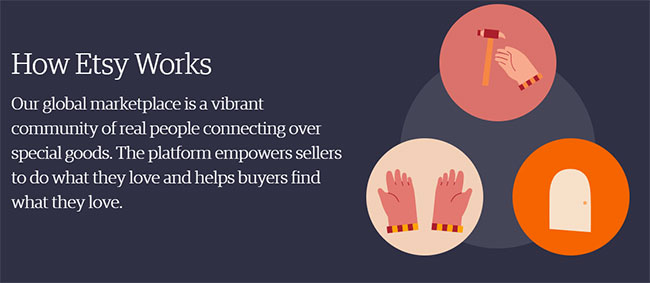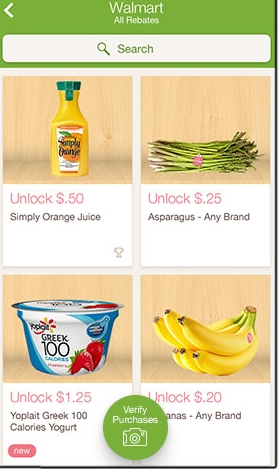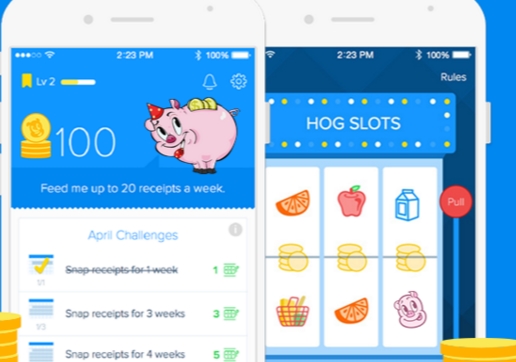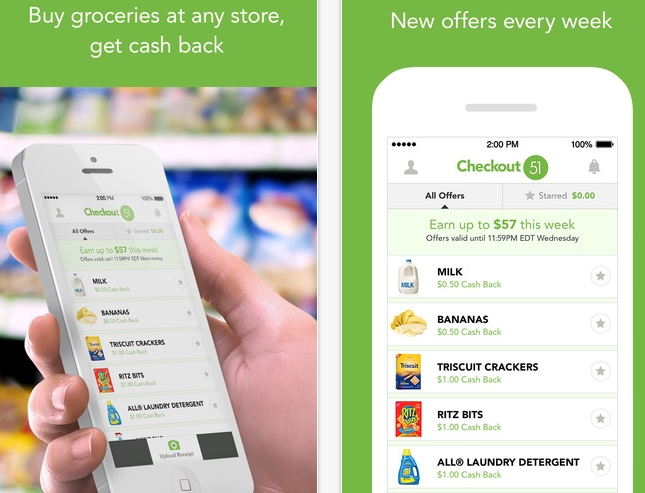If you’re intrigued by how other kids earn money online and in real life, and want your own kids to learn from the success (or failures) of children their own age, this post is definitely for you.
The internet has provided income opportunities for everyone, regardless of gender, beliefs, profession, and age. Young or old people can get a slice of the pie, as long as they’re willing to learn how.
Even reading stories online of 10-year-old CEOs building businesses from the ground up can burn a fire in your kids and inspire them to follow in their footsteps.
But as parents, I understand that you’d want to learn the ins and outs of such opportunities first, before showing them to your kids. And that’s totally okay.
Before I share the list, be aware that:
- When I say “kid,” I’m talking about school-kid age to pre-teens (about 8 to 12 years old). If your child is already a teenager, maybe my post about online jobs for teens would be a more appropriate fit.
- The following list of money-making side jobs no longer include house chores or any tasks paid by you (the parents), or any member of the family. I only included jobs for kids that they can make independently, or outside of their family.
11 Traditional Ways Kids Earn Money
I wanted to kick this list off with a mix of traditional and new-age ways kids can earn money.
1. Lemonade Stands
Lemonade stands may seem so cliché, but they still work. And your kids are old enough to do the squeezing of lemons, setting up shop, and selling the drinks.
You can always turn the classic lemonade stand into something more.
Just ask Me & the Bees Lemonade owner Mikaila, who began her bottled lemonade business at 4 years old. She won an investment on the show Shark Tank.
2. Pet sitting
Like errand jobs that require you to travel around the city, walking the dogs on their own may not be safe for young kids.
However, pet-sitting is perfect.
The owners can just drop off the pet at your house and your kid will be responsible for it throughout its stay.
Your kids can charge depending on the length of stay, how demanding the pet/s are, and the number of pet-related errands included (giving baths, giving medicine, etc.).
3. Wash cars
Bring out a sign at your garage. Send out flyers throughout your neighborhood. Then wait for customers to line up.
Washing cars is great exercise too, so if your goal is to keep your kids off gadgets during their school breaks, then this gig can be a lucrative activity.
4. Take care of the lawn
Kids will be able to build discipline and strength by cleaning gutters, mowing the lawn, shoveling snow, raking leaves, and providing a wide range of lawn care services.
Take photos of the lawn before and after working on it.
Use these photos on your website or Facebook page as proof of how well your kids can maintain a lawn.
5. Watering service
If mowing and raking leaves sounds like too much, watering plants may be a better option for your kids to earn money.
If you can find families who work long hours, are going on vacation, or disabled or elderly neighbors who need a hand with their plants.
6. Sell Candies, Cupcakes, or other Sweets
Everyone loves sweets. And if your kid does too, kids can earn money by cooking or baking sweets and selling these sweets to their classmates, family or friends, and even around your local community.
Eventually, you can ship out your sweet treats to other places in the country.
Zollipops was developed by then-7-year-old Alina Morse and her dad as sugar-free, acid-free lollipops that are teeth-friendly. Now, they have expanded to Zolli Drops that are “sugar-free, non-GMO, gluten-free, dairy-free, vegan, kosher, and made with natural flavors and colors in the USA.”
Look at Mr. Cory’s Cookies as well. He ships them to customers and even introduced a cookie subscription at one point, which sends cookies to customer’s doorsteps each month.
7. Become Tech Support Staff to the Elderly
Your 8-year-old kid is probably more tech-savvy than you.
They’re most likely more knowledgeable than their grandparents when it comes to using smartphones or the computer.
Their generation is hooked on technology, so why not take advantage of this?
Set-up a tech support business where kids can help seniors send emails, upload photos, check Facebook, perform tasks like data entry, teach them blogging, introduce them to games, and so on.
8. Start a Fashion Business
If you create bracelets, necklaces, earrings, and other DIY jewelry, you can start a fashion business and sell the items at your school, local markets, or online.
This also goes for kids who have an eye for fashion.
- Moziah Bridges took the lack of bow options in the market to heart and created his own with Mo’s Bows.
- Brandon and Sebastian Martinez developed their own line of socks called Are You Kidding.
9. Sell Your Own Brand
You can sell almost anything you want, as long as you believe in your product 100%.
Good examples of super-young entrepreneurs are:
- Asia Newson — Known as the youngest Detroit-based entrepreneur, Asia began selling candles at age 5. She now leads her own company, Super Business Girl, and trains other youth on how to succeed in business.
- Sisters Lily, Chloe, and Sophie Warren — Launched their beeswax-based skincare products under the brand Sweet Bee Sisters when they were 8, 6, and 4 years old.
10. Market Your Skills
Do you have a special talent you want to share with the world?
10-year-old twin sisters Amira and Kayla make up a DJ duo that caters to children’s parties for 4- to 9-year-olds.
They’re kind of a big deal, deejaying at New York Knicks Games, Kids Rock! New York Fashion Week and other events.
11. Rent Your Stuff Out
Unlike grownups who can rent their homes, extra rooms, garage, and other properties out to strangers, kids are not yet ready for such big responsibilities.
However, they can start small by arranging the garage for items to rent out or setting up a neighborhood library where they can lease books for a minimal fee.
The Reality of Becoming YouTube Stars, Influencers, and other Internet Sensations
Ask any kid who has been exposed to the internet about what they want to be when they grow up, and more than half of these kids would answer “YouTuber” without batting an eyelash.
The successes of YouTube stars are truly awe-inspiring.
Who wouldn’t want their kid to be the next Ryan’s World (formerly Ryan ToysReview) or his idol EvanTubeHD? These two boys are the stars of the most popular kid channels on YouTube and they earn millions of dollars each year. Just by unboxing toys, playing with them, and reviewing them in front of the camera.
Sounds pretty easy to replicate, right?
Unfortunately, it isn’t as easy as it sounds. Evan and Ryan have several things in common:
- They were the brains of their own channels (even if the parents joined in on the fun after awhile). You can see that the kids wanted it 100%
- They are naturally gifted on camera. They are adorable and have excellent communication skills.
- They are relatable, good-mannered kids. (If I were a parent and saw my kid watching these two, I wouldn’t have any issue with it. But if I see my kid watching YouTubers who tantrum as their skit, or embark on crazy pranks, they’re probably blocked for good).
Not everyone’s kids can be the next Evan or Ryan.
And the sooner parents like you and I understand that becoming popular on YouTube doesn’t come overnight or happen to everyone, the easier it is for us to decide if we’re going to allow our kids to star in their own channel.
This goes for influencers (kid models on Instagram becoming brand ambassadors), game-streaming stars, or other internet sensations as well.
13 Ways Kids Can Earn Money Online
Despite what I said about kids aspiring to become the next internet sensation, there are ways for kids to earn money online. Here are some of them.
- Take Surveys Online — There are legitimate companies around and they actually like to know what people think. Surveys are usually categorized by age group, so if there are surveys that target kids, they’ll definitely have the chance to participate and get paid. Doing this can bring in $50 to $100 a month.
- Sell Your Used Items Online. If your kid is an only child, you may have plenty of toys they’re not interested in or clothes they’ve outgrown. Have your child sort out which toys, clothes, books, and even small furniture they can let go of and help them set up an eBay shop to sell them.
- Sell a Subscription — People love subscriptions, especially if they’re receiving something from the mail. A good example of this is the Stem In A Box by TopSecretScience (owned by an 8-year-old LA-based kid named Max), which ships out science kits each month. A kit includes a chapter of a story and other science projects that kids can enjoy.
- Turn Your Crafting into a Business — Whether you make paper dolls, origami, wooden projects, and other crafts, Etsy can turn these items into cash. It can also help kids develop their creativity and time management skills since orders come with scheduled shipping and you should be able to ship out your products on time.
- Launch a Design Firm — You can start selling t-shirts, mugs, prints, and other products with print-on-demand companies. Kids see differently from adults, so let them create designs with their own ideas and insights.
- Build (and Sell) an App. Children as young as four are being taught how to create apps. App builders for kids like Kids App Maker and Appy Pie make it a snap. Kids can then sell them on App Store or Google Play Store.
- Sell Photos — If your kid is a budding photographer, they can get paid for the work by licensing photos to stock photography sites like Shutterstock or iStock. You can also check out other apps that pay for photos.
- Sell Slime —Samantha Zumwalt of Samantha Slime Shop makes and sells her own range of slime online.
- Become a Tester — Some kids earn money through jobs like product testing. Test websites, test video games, test Amazon products, and so on.
- Solve a Problem With a New Product — You may think that the world has run out of problems to solve, but you’d be surprised at how many inventions are still created today. For example, Lacrosse player Rachel Zietz wasn’t happy with the equipment available in the market, so she designed her own products and sold them on Gladiator Lacrosse.
- Become a motivational speaker — Caleb Maddix is a motivational speaker who began as early as 12 years old. Today, he owns Apex 4 Kids, the world’s first-ever relatable, entertaining, and powerful personal growth for kids.
- Write and Publish an eBook. Even the youngest kids do have something to say or a story to tell. Help them write an eBook and self-publish it. Get inspired by such young authors as Alec Greven and Brittany and Brianna Winner
- Build a Website — Juliette Brindak Blake was only 10 years old when she launched the website Miss O and Friends. Today, it’s a safe place for kid, tween, and teen girls, providing age-appropriate content with a safe messaging system.
How to Teach Children About Money
It’s not enough for kids to earn money; they should also be taught about its value, how to spend it wisely, and how to save up small amounts to make big purchases later on.
It starts by teaching them to look at price tags at the supermarket, showing them various ways to pay for purchases both in real life and in online stores, and even playing pretend “store” at home complete with play money and play credit cards.
Here are some online resources to help you teach your kids about money:
- Financial Education Course For Kids | MoneyTime
- Financial Literacy for Kids | National Financial Educators Council
- Financial Literacy Course | Biz Kids
- Financial Literacy for Kids | Orange Owl Academy
It’s not easy for kids to earn money
Some kids earn money online, while others prefer to do it old school.
However, since we’re talking about younger kids, parents like you and I still need to guide them on whatever money-making opportunity they plan on embarking.
They don’t have to be CEOs of a company or internet stars, but exposing them to jobs or businesses at an early age can be exceptional training to prepare them for the real world.
Which of these money-making opportunities will your kid be likely to be interested in? Share it with us and other fellow parents in the comments!

























